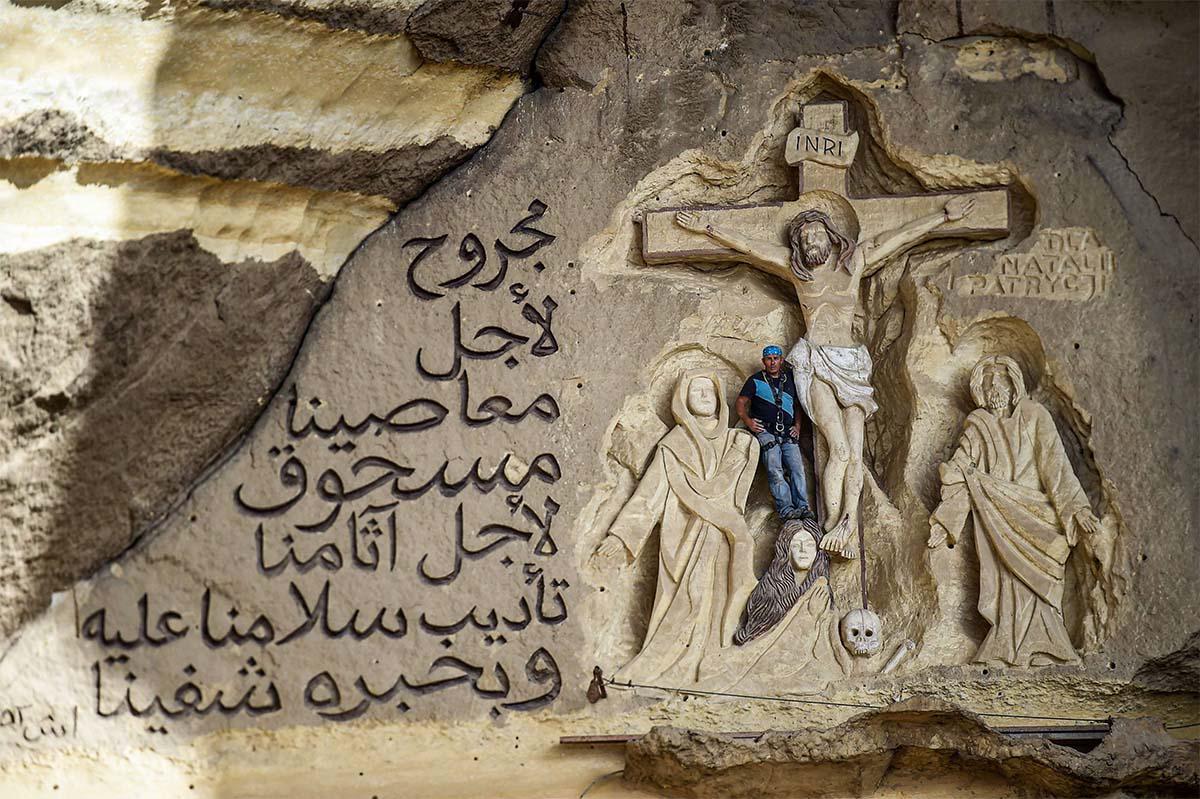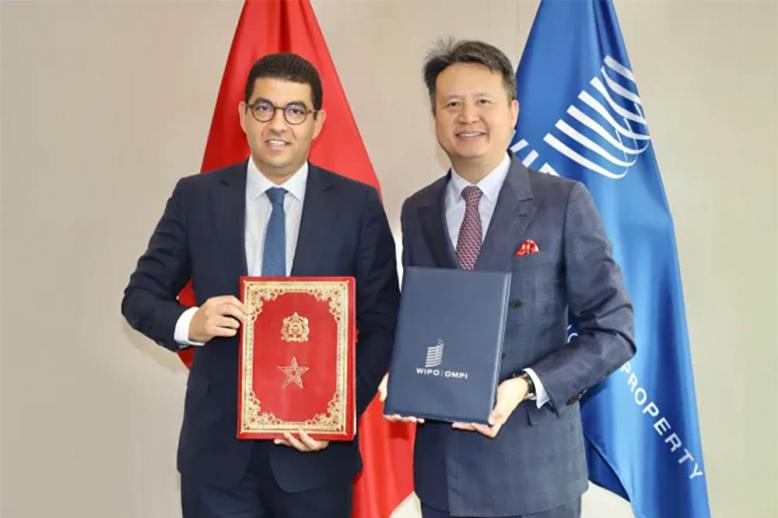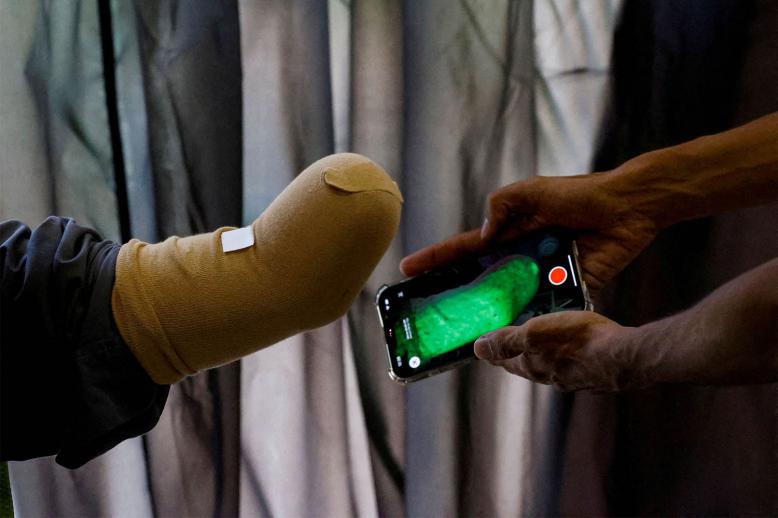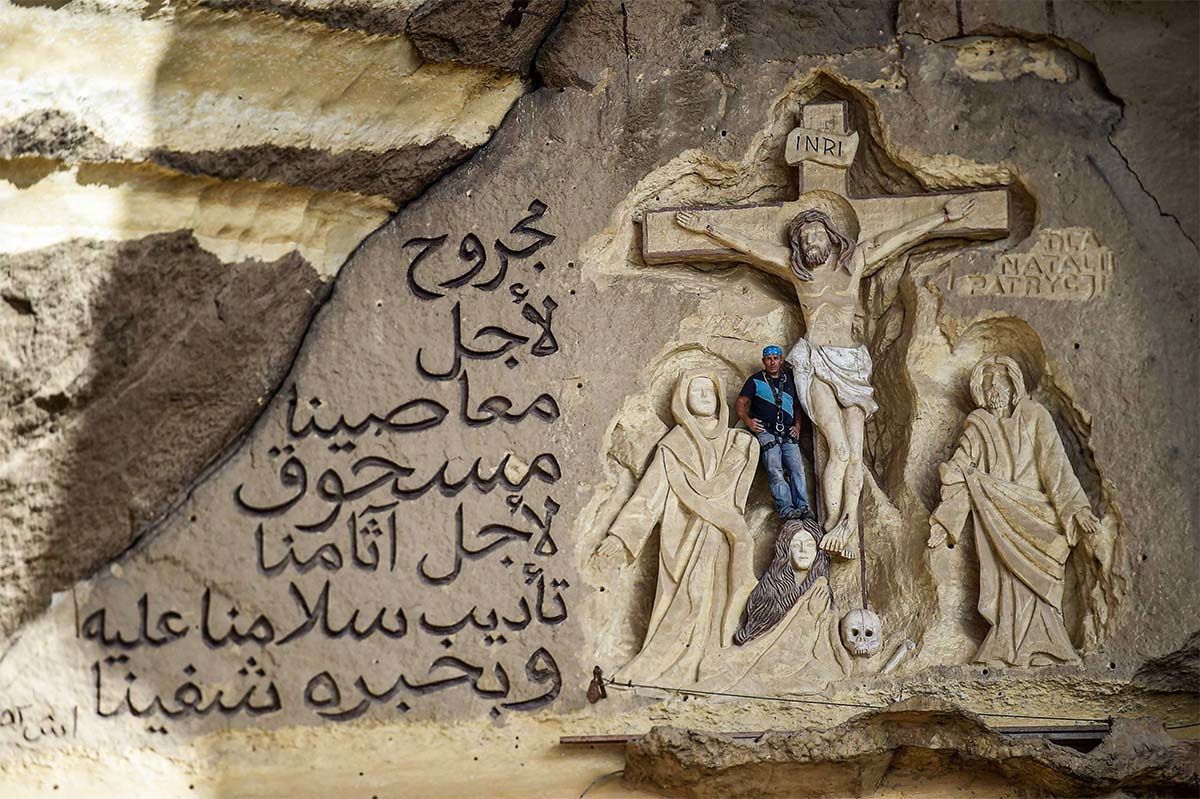Biblical art adorns Egyptian cave church
Mario has spent more than two decades carving rugged insides of seven cave churches and chapels of the monastery with designs inspired by biblical stories.
CAIRO - Whistling a tune, Mario nimbly clambered up the scaffolding enveloping part of the rock-hewn St. Simon Monastery atop Cairo's Mokkatam hills to add the final touches to his latest sculpture.
He had spent more than two decades carving the rugged insides of the seven cave churches and chapels of the monastery with designs inspired by biblical stories.
It was all done to fulfil the wishes of the monastery's parish priest who met Mario in the early 1990s in Cairo. The Polish artist, who had arrived in Egypt earlier on an educational mission, was then looking for an opportunity to serve God at the monastery.
"I want you to turn the mountain into an open Bible," Mario recalls the priest telling him.
Back then, Mario had no experience in sculpting. But he bought an electric drill and chisel hammer and within days had finished his first sculpture.
It told the story of the miracle of the moving of Mokkatam mountain, a feat said to have been done by a 10th century craftsman known as Simon the Tanner to prove the strength of his Christian faith. The monastery is named after him.
"I had no idea sculpting was a talent I have, but it turned out (to be) as you can see," said Mario as he showed off his work around the walls of a vast cavern which regularly hosts gatherings at the monastery.
Across one, he sketched another chronicle about St. Simon, shown brandishing a needle before gouging his eyes out to punish himself for lusting after a woman.
Other walls recount stories from the New Testament.
"It can take between five days up to half a year to finish a sculpture, depending on the design," he said.
'Masterpiece'
"My work is meant to tell spiritual stories of this mountain and of Christianity in general," he said. "I want them to live on for future generations."
Mario says he kept practicing, sculpting for more than 23 years, and completed about 70 sculptures adding to the monastery's allure by giving it an ancient look.
Construction of the complex started only in the 1970s, a thousand years after the story of moving Mokkatam mountain believed to have taken place in November 979.
Building began after the monastery's current parish priest known as Father Samaan, Arabic for Simon, visited the area and decided to turn it into a worship place.
"I also thought then why not carve the miracles of Jesus on the mountain. It will benefit the people and (create) a lively depiction of these stories," said Father Samaan.
Resting at the pinnacle of Mokkatam mountain, the monastery has a commanding view of the megalopolis of Cairo. Unsurprisingly though, reaching the top of the mountain is no small feat.
The gruelling trip to the top requires visitors to pass through the teeming slum area known as the city of "Garbage Collectors" of uneven roads and malodorous piles of garbage strewn along the way.
Despite the tough journey, the monastery welcomes thousands for services weekly as well as on holidays and celebrations of the Copts, Egypt's Christian minority which makes up about 10 percent of the country's Muslim-majority population.
"The monastery is now a masterpiece," Samaan said in his office in one of the churches of the monastery. "We have the pyramids and the artefacts in the Egyptian museum. But they are all ancient but this monastery is new."
'Most comfortable'
For Mario, whose real name is Mariusz Dybich, he grew accustomed to life in Cairo and work at the monastery.
Besides sculpting, he even gives an adrenaline-spiking High Ropes sport course at the monastery.
"It is surprising to many that a European man willingly leaves his country to work in a poor slum area as that of the city of Garbage Collectors in Cairo," said Mario. "But I believe it's God who sent me here."
The 51-year-old is originally from the city of Krakow in southern Poland but has been living in Egypt for nearly three decades now. He has over the years become known to everyone in the monastery and the thousands of people living in the city of "Garbage Collectors" by his nickname, Mario.
He married an Egyptian woman and has two girls. He mastered over the years the Arabic language and developed a particularly strong command of the Egyptian dialect.
He witnessed in Egypt the 2011 uprising which toppled longtime autocrat Hosni Mubarak and ensuing years of political and economic turmoil.
Yet he does not see himself settling anywhere else.
"I just love living here. It's where I am most comfortable among the simple people of Egypt. I would not leave unless God decides otherwise."





